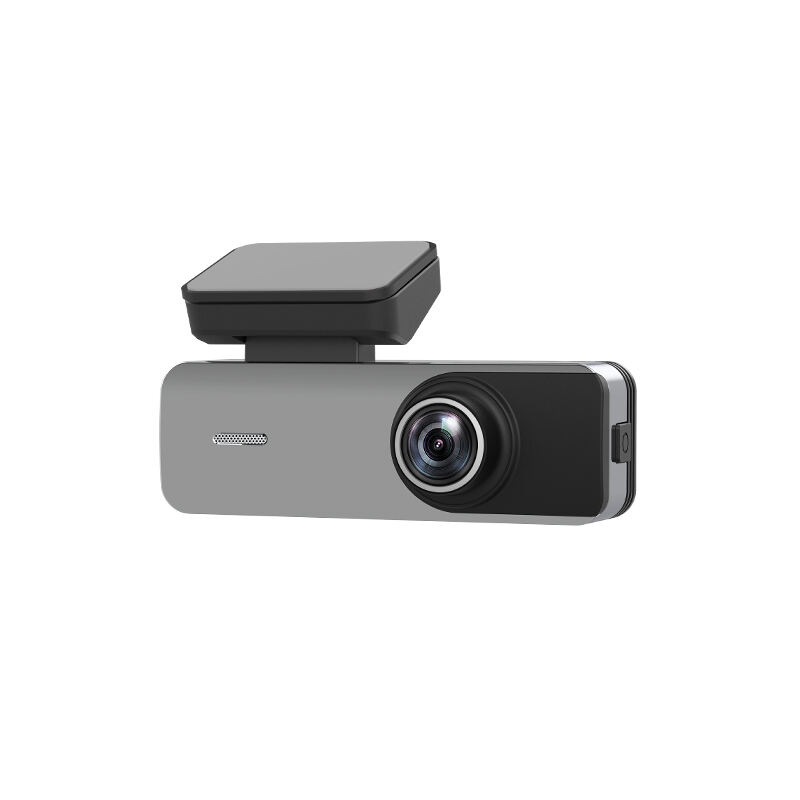Understanding Modern Vehicle Safety Through Advanced Detection Technology
Vehicle safety has evolved dramatically over the past decade, with blind spot monitoring emerging as a crucial technological advancement in collision prevention. This sophisticated system serves as an extra pair of eyes, constantly scanning the areas that drivers struggle to see during their daily commutes. As roads become increasingly congested, the importance of these intelligent safety features cannot be overstated.
Modern blind spot monitoring systems utilize an array of sensors and cameras to detect vehicles, cyclists, and other potential hazards that may lurk in drivers' blind zones. These systems work tirelessly to provide real-time alerts, helping drivers make safer lane changes and avoiding potentially dangerous situations on the road.
Core Components of Blind Spot Detection Systems
Sensor Technology and Placement
The foundation of effective blind spot monitoring lies in its sophisticated sensor array. These systems typically employ radar sensors mounted beneath the side mirrors or in the rear bumper corners. The sensors continuously emit electromagnetic waves that bounce off nearby objects and return to the sensor, providing precise information about the presence and location of vehicles in adjacent lanes.
Advanced systems may also incorporate cameras that work in conjunction with the radar sensors, providing a more comprehensive detection capability. This dual-technology approach ensures greater accuracy and reduces false alerts, making the system more reliable in various driving conditions.
Visual and Auditory Alert Mechanisms
When a vehicle enters the monitored zone, the system activates warning indicators, typically located in or near the side mirrors. These visual alerts usually take the form of illuminated icons or LED lights, designed to catch the driver's attention without causing distraction. The placement of these indicators is carefully considered to ensure they're easily visible during quick mirror checks.
Many modern systems also include auditory warnings that activate when the driver signals a lane change while another vehicle occupies the blind spot. These acoustic alerts can range from subtle chimes to more urgent beeping sounds, depending on the potential risk level of the situation.
Real-World Applications and Benefits
Highway Driving Safety Enhancement
Highway scenarios present some of the most challenging driving conditions, where blind spot monitoring proves invaluable. During high-speed travel, these systems provide crucial awareness of fast-approaching vehicles that might otherwise go unnoticed. The technology is particularly effective during peak traffic hours when multiple lane changes are common and traditional mirror checks may not suffice.
The system's ability to detect vehicles approaching at varying speeds helps drivers make more informed decisions about lane changes, significantly reducing the risk of highway collisions. This becomes especially important when merging onto highways or navigating through complex interchanges.
Urban Traffic Navigation
In city environments, blind spot monitoring systems adapt to handle unique challenges posed by dense traffic and diverse road users. The technology excels at detecting smaller vehicles like motorcycles and bicycles, which can be particularly difficult to spot in traditional blind spots. This capability is crucial in urban areas where various modes of transportation share the road.
The system's effectiveness in stop-and-go traffic provides an additional layer of safety when vehicles frequently change lanes at lower speeds. This constant vigilance helps prevent the common fender-benders that often occur in congested city streets.
Integration with Other Safety Features
Cross-Traffic Alert Systems
Modern blind spot monitoring systems often work in tandem with rear cross-traffic alert features. This integration proves particularly valuable when backing out of parking spaces or driveways. The combined technologies provide comprehensive coverage of potential hazards approaching from various angles, creating a more complete safety network.
The synergy between these systems enhances their individual capabilities, offering drivers a more robust safety package. When reversing, the cross-traffic alert function extends the blind spot monitoring's coverage area, warning of vehicles approaching from the sides that might not be visible through mirrors or backup cameras.
Lane Departure Warning Coordination
The coordination between blind spot monitoring and lane departure warning systems creates a comprehensive lane management solution. While blind spot monitoring watches for vehicles in adjacent lanes, lane departure warning ensures the driver maintains proper lane position. This combination significantly reduces the risk of unintended lane changes and potential collisions.
Together, these systems work to maintain safe vehicle spacing and lane discipline, particularly beneficial during long highway drives where attention may waver. The integrated approach provides multiple layers of protection against common driving risks.

Future Developments and Innovations
Artificial Intelligence Integration
The next generation of blind spot monitoring systems will incorporate advanced AI algorithms to improve detection accuracy and reduce false alarms. These intelligent systems will learn from driving patterns and adapt their sensitivity based on specific driving conditions and driver preferences. The integration of machine learning capabilities will enable more sophisticated object recognition and risk assessment.
Future systems will also better anticipate potential conflicts by analyzing the behavior of surrounding vehicles and predicting their likely movements. This proactive approach will provide earlier warnings and more time for corrective action.
Enhanced Vehicle Communication
Vehicle-to-vehicle communication will revolutionize blind spot monitoring by enabling direct data exchange between nearby vehicles. This advancement will allow for more precise awareness of surrounding traffic and potential hazards, even in challenging weather conditions or complex road situations.
The implementation of 5G networks will facilitate faster and more reliable communication between vehicles, leading to more effective blind spot detection and collision prevention. This connected vehicle ecosystem will significantly enhance the capability of current blind spot monitoring systems.
Frequently Asked Questions
Can blind spot monitoring detect motorcycles and bicycles?
Yes, modern blind spot monitoring systems are designed to detect smaller vehicles including motorcycles and bicycles. The sophisticated sensors can identify various object sizes and speeds, though sensitivity may vary between different vehicle manufacturers and models.
Does weather affect blind spot monitoring performance?
While extreme weather conditions can impact sensor performance, most current blind spot monitoring systems are designed to function effectively in rain, snow, and fog. However, heavy accumulation of snow or dirt on sensors may temporarily reduce system effectiveness until cleaned.
How reliable are blind spot monitoring alerts?
Blind spot monitoring systems have proven highly reliable in real-world conditions, with false alerts being relatively rare in modern vehicles. However, they should be used as a supplementary safety feature rather than a replacement for proper mirror checks and driver awareness.
Can blind spot monitoring be retrofitted to older vehicles?
While aftermarket blind spot monitoring systems are available, their effectiveness may not match factory-installed systems. Professional installation is crucial for proper sensor placement and integration with vehicle electronics.



